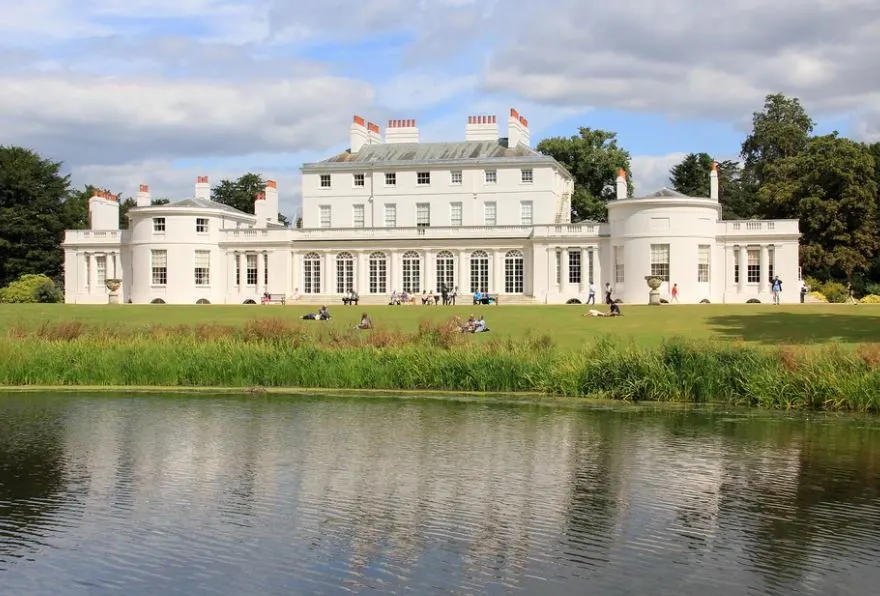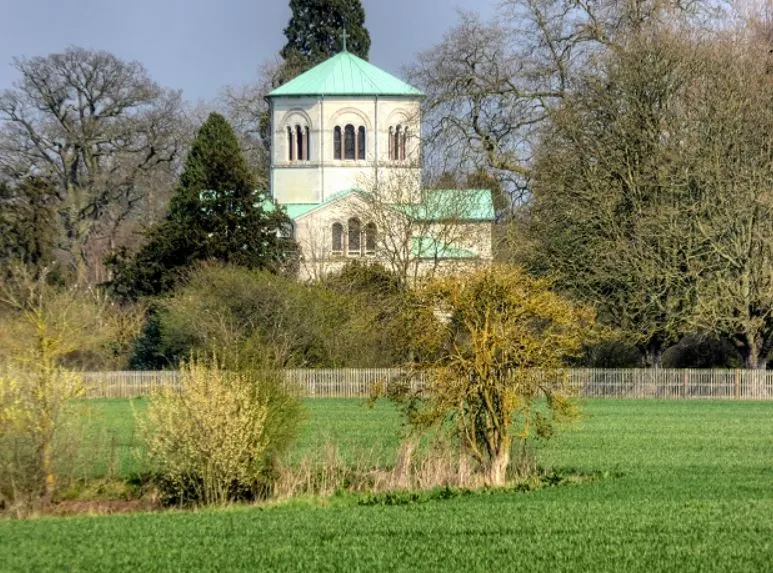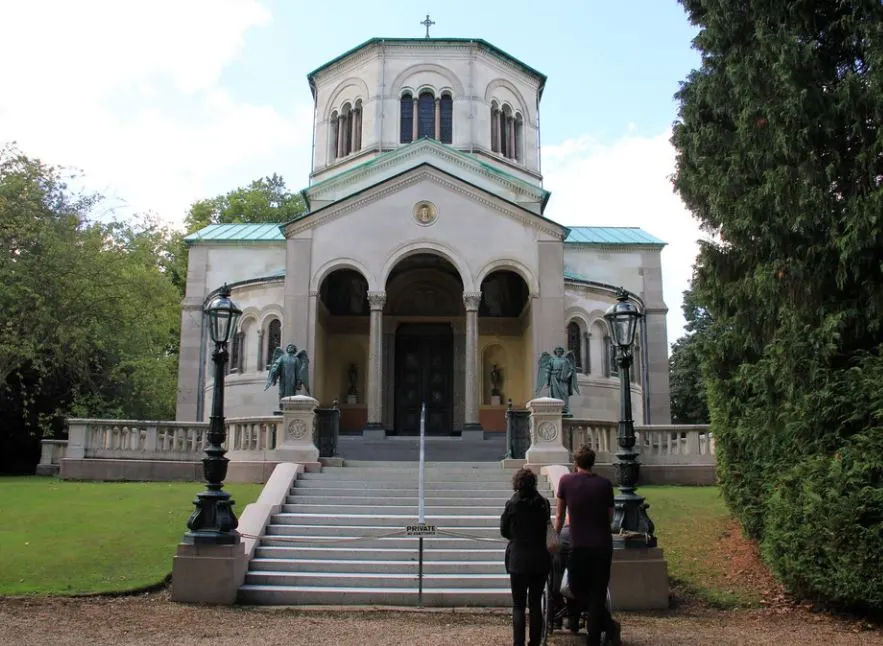Some of the most prominent English royals are buried near one of the most spectacular castles in England, just outside of London.
In this article, we’ll take a closer look at some of the most interesting facts about the Royal Mausoleum at Frogmore, one of the most remarkable mausoleums in the world.
1. It’s the final resting place of Queen Victoria and Prince Albert
The Royal Mausoleum is the name used for the building that serves as the final resting place of Queen Victoria (1819-1901) and her husband Prince Albert (1819-1861).
The death of Prince Albert at the young age of 42 came as a shock to his wife and she wore black in mourning for the rest of her life. She also commissioned the construction of her husband’s final resting place just 4 days after he passed away on December 14, 1861.
This structure eventually became her final resting place as well as it was her final wish to be buried next to her husband.

2. It’s located within a royal park just west of London
The mausoleum was constructed on the Frogmore estate, a large estate just west of London that features the Frogmore House, the Frogmore Cottage, and the Frogmore Gardens. It covers a total area of 130,000 square meters (33 acres) and is situated within a larger park called Home Park.
This huge park is administered by the Crown as it’s situated just east of the most famous royal castle in England, Windsor Castle in the town of the same name in the English county of Berkshire. This is just a few kilometers away from the western outskirts of London.
Parts of this park are open to the general public and it covers a total area of 265 hectares (655 acres) and is equally administered by the Crown Estate. The Frogmore estate is usually closed to the public except for a few days a year on special occasions.

3. It was built the year following Prince Albert’s death in 1861
The foundation stone of the mausoleum was laid on March 15, 1862, about 3 months after Prince Albert passed away. One of the most remarkable facts about the Royal Mausoleum is that this was the same day that Queen Victoria had personally approved the plans of the structure.

The plans were drawn up by architects Ludwig Gruner and A. J. Humbert and the building were quickly erected that same year. The distinctive dome of the structure was completed in October of 1862 and the Royal Mausoleum was consecrated in December of that year.
4. The Queen Mother’s Mausoleum was completed the year before
Equally remarkable is that she had already chosen a site for the structure on December 18, 1861, just 3 days after the tragic event. This probably means that plans to build a mausoleum for the prominent royals had come up earlier.
The Queen Mother, Princess Victoria of Saxe-Coburg-Saalfeld (1786-1861) had passed away on March 16, 1861, and a mausoleum had been erected just walking distance away in the Frogmore Gardens as well. The usual burial place for prominent royals was either Westminster Abbey or St. Georges Chapel at Windsor Castle.
The “Duchess of Kent’s Mausoleum” was designed by the same architects as well and completed in July 1861. It features Neoclassical elements based on the design of Donato Bramante’s famous Tempietto in Rome.

5. It was privately financed and extremely expensive to build
Even though the building isn’t immense, it was extremely expensive to build. It cost about £200,000 at the time, the equivalent of well over £18.1 million today! This was all paid for by Queen Victoria herself along with Edward, the Prince of Wales.
The main reason why the building turned out to be so expensive was the building materials used during its construction. These included:
- Portland stone (quarried in Dorset) and granite for the core structure.
- Australian copper covers the roof.
- Portuguese red marble and Sienese marble to decorate the interior walls.
A bronze inscription above the door reads:
Alberti Principis quod mortale erat
Hoc in Sepulchro deponi voluit Vidua moerens Victoria Regina A.D. MDCCCLXII. Vale Desideratissime! hic demum Conquiescam tecum
Tecum in Christo consurgam
6. It took nearly a decade before the structure was completed
It’s quite remarkable but the remains of Prince Albert weren’t interred in the mausoleum until the year 1871, this is for the simple reason that the interior decorations weren’t completed until then. This was nearly a decade after the mausoleum had been consecrated.
Queen Victoria’s remains were interred here much faster on February 5, 1901, just 2 weeks after she had passed away on January 22, 1901.

7. The interior was inspired by the work of a famous Renaissance artist
The interior is also richly designed with fine works of art, including paintings depicting the nativity of Jesus Christ, the crucifixion, and the resurrection. There are also paintings and statues of the four evangelists.
These decorations were created in the same style as the works of Raphael, one of the most renowned artists of the Renaissance in the early 16th century.
Prince Albert was clearly a fan of Raffaello Sanzio da Urbino (1483-1520) as he had once referred to him as being “the greatest artist of all time.“
8. The Romanesque building is just as high as it is wide
Even though the Duchess of Kent’s Mausoleum features Neoclassical elements, a revival architectural style that was quite popular in the 19th century, the Royal Mausoleum was designed in the traditional Romanesque style.
It has the form of a Greek cross with a diameter of just over 21 meters (70 feet). The inner core of the structure has an octagonal shape and reaches the same height at the top of the remarkable dome.

9. There’s something very special about the mausoleum’s sarcophagus
Even though the mausoleum is richly decorated with fine works of art, the most prominent element of the interior is the enormous granite sarcophagus which holds the remains of both Prince Albert of Queen Victoria.
Even though the building also features monuments dedicated to Edward, Duke of Kent (1767-1820), who was Victoria’s father, and Princess Alice, Grand Duchess of Hesse-Darmstadt (1843–1878), Victoria’s second daughter, nobody else is buried here.
This sarcophagus features effigies of the couple, life-sized marble sculptures, and is believed to be the largest block of granite in existence! It originally weighed 33 tonnes a weight that was reduced to 18 tonnes after being transformed into a sarcophagus.
It’s also virtually impossible to open the lid of the sarcophagus because it’s estimated to weigh a whopping 5 tonnes!
10. It used to be open on special days but is being restored since 2018
Whenever the Frogmore Gardens are open, the Royal Mausoleum could be visited as well. The building faces serious structural problems though because it was built in an incredibly damp location, the reason why the estate was originally called “Frogmore” as well.
The building, which was designated as a Grade I Building on the National Heritage List of England on October 2, 1975, is undergoing a serious renovation to resolve the damp problems.
This project could take up to a decade to be completed, so it will remain impossible to get inside until then. So for now, strolling down the amazing Home Park near Windsor Castle remains the only option, except for special days of the year in which the Frogmore estate opens its gates as well!

